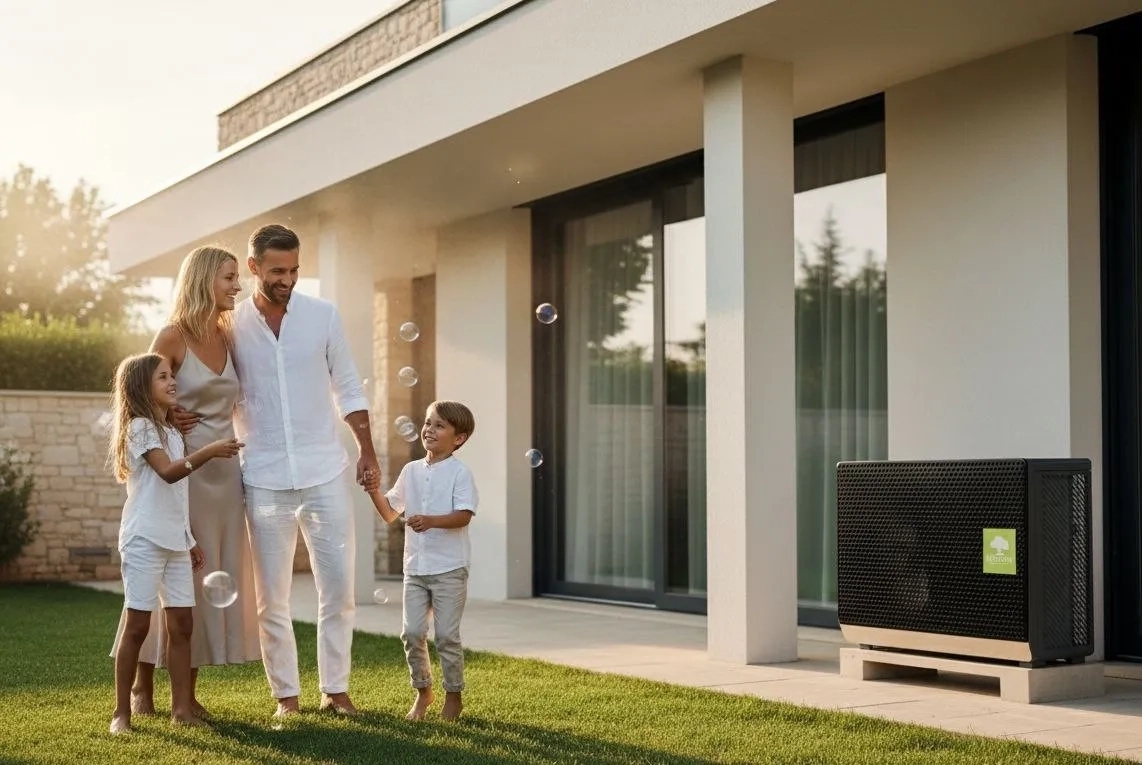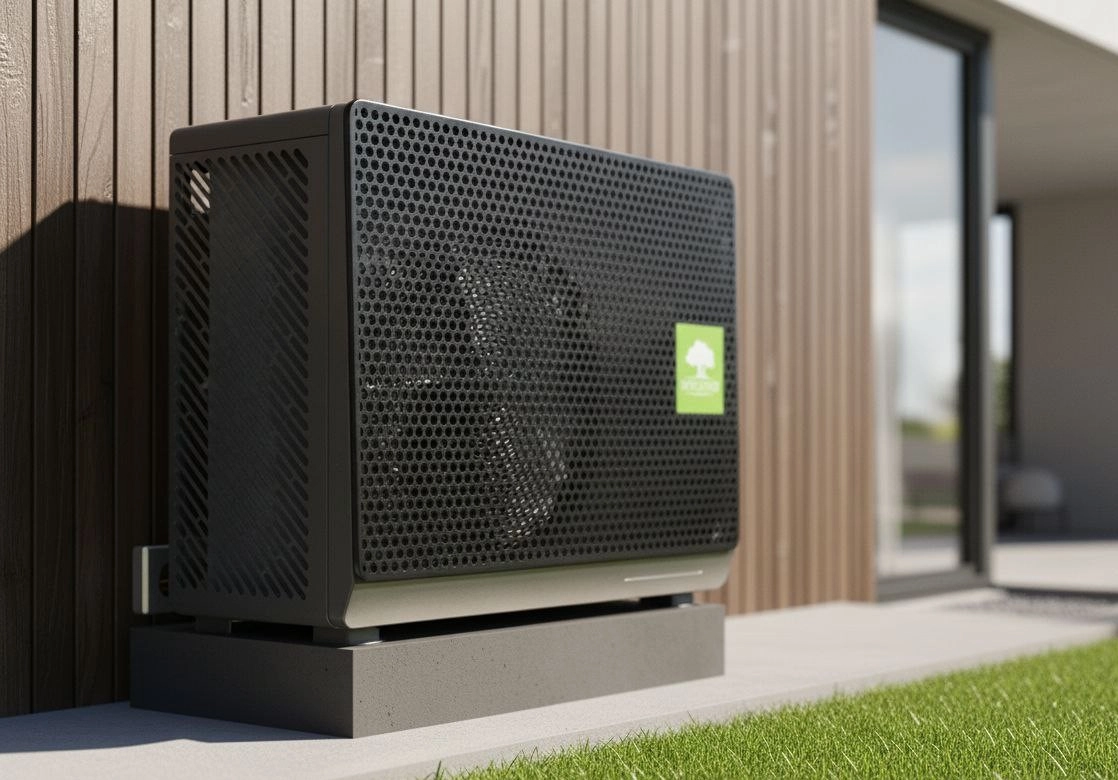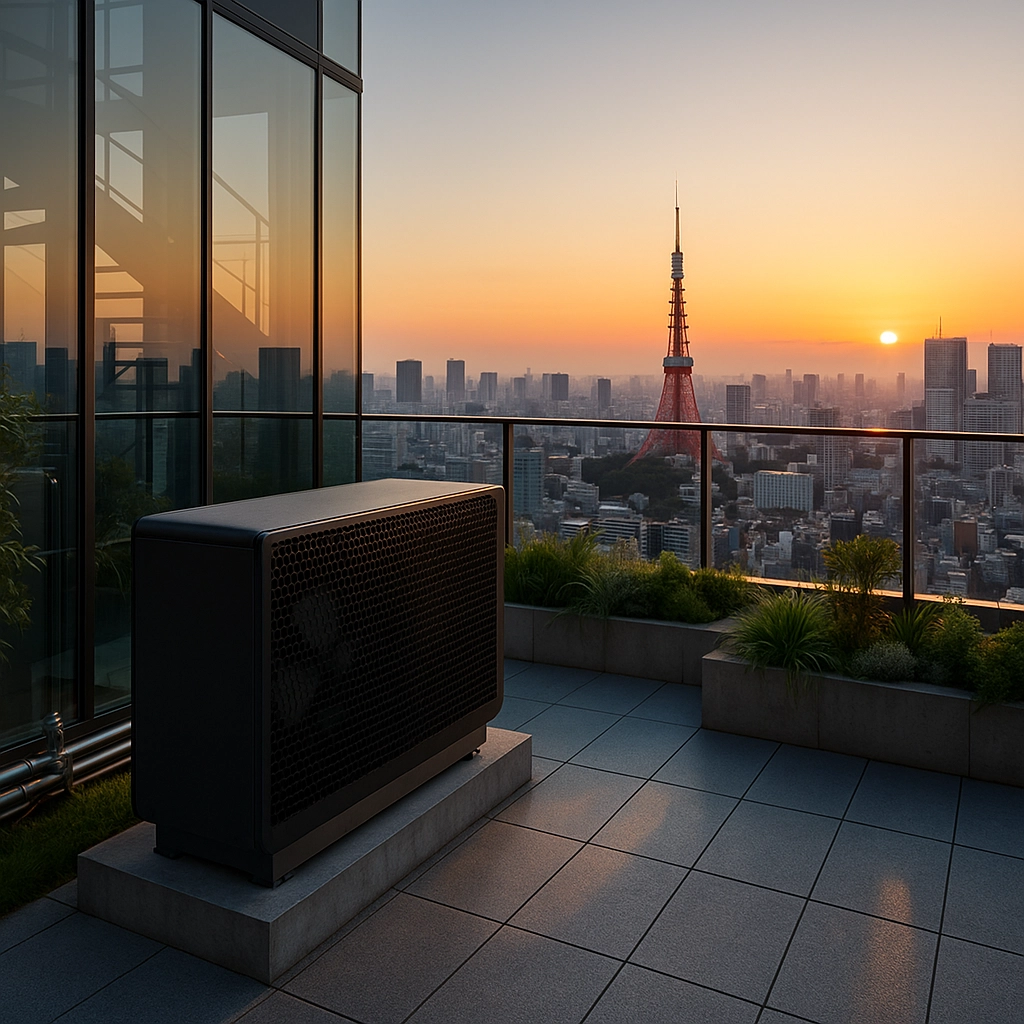
Do you know the feeling when your home is either too cold or unbearably hot, while your heating bills are shockingly high every month? This is a classic problem of standard heating systems where the flow temperature is controlled by a regular thermostat. Most homeowners use manual adjustment—when it’s cold, they raise the temperature; when it’s hot, they lower it. But this approach has two serious drawbacks: first, constant manual adjustments; second, significant energy waste.
Why is this inefficient? When it’s -15°C outside, your heating system needs one flow temperature, and when it’s +5°C—an entirely different one. A regular thermostat doesn’t account for these changes and often causes overheating or insufficient heating. The result is discomfort and unnecessary electricity costs.

What is weather-compensated control of a heat pump?
Weather-compensated control is an intelligent system that automatically adjusts the flow temperature depending on outdoor weather conditions. Simply put, the colder it is outside, the hotter the water the heat pump supplies to the heating system—and vice versa.
At the core of this process is the heating curve—a special graph that defines what flow temperature is needed for each outdoor temperature. This curve accounts for the building’s thermal properties, the type of heating emitters, and other parameters to ensure optimal comfort with minimal energy use.
Logic of the heating curve: How does weather-compensated control work?
The operating principle of weather-compensated automation is quite simple yet extremely effective. Consider this example:
- When it’s -10°C outside, the system needs a flow temperature of about 55°C for radiators
- When it’s +5°C outside, 35°C in the flow is enough to ensure comfort
- At -20°C, the flow temperature may rise to maximum values (55–60°C for a heat pump)
Instead of you manually adjusting these parameters, weather-compensated automation does it automatically. A special sensor sends outdoor temperature data to the controller, which determines the optimal flow temperature at that moment according to the heating curve. This ensures not only comfort but also significant savings—the heat pump operates at maximum efficiency, as the COP (coefficient of performance) is significantly higher at lower flow temperatures.
Checklist for choosing a system with weather-compensated control
Planning to install a system with weather-compensated control? Pay attention to these key points:
- Outdoor temperature sensor – the foundation of a weather-compensated system; it must be highly accurate and resistant to environmental exposure
- Ability to adjust the heating curve – the ideal system allows fine-tuning to your specific home
- Support for different heating circuits – systems with radiators and underfloor heating require different temperature regimes
- Integration with room thermostats – for additional control accuracy
- Mobile control – the ability to control the system remotely via an app
- Energy monitoring – a function for tracking energy consumption to optimize costs

BeeSmart models for weather-compensated control
Mycond offers several BeeSmart heat pump models with built-in weather-compensated control that differ in power and technical specifications:
| Model | Heating capacity, kW (A7/W35) | SCOP | Energy efficiency class | Operating range, °C | Max. flow temperature, °C | Compressor |
|---|---|---|---|---|---|---|
| MHCS 035 NBS UBS | 9,2 | 4,38 | A+++ | -25...+43 | 55 | Mitsubishi Electric (inverter) |
| MHCS 045 NBS UBS | 11,6 | 4,30 | A+++ | -25...+43 | 55 | Mitsubishi Electric (inverter) |
| MHCS 050 NBS UBS | 15,35 | 4,78 | A+++ | -25...+43 | 55 | Mitsubishi Electric (inverter) |
| MHCS 070 NBS UBS | 18,5 | 4,47 | A+++ | -25...+43 | 55 | Mitsubishi Electric (inverter) |
When is it appropriate to choose BeeSmart for weather-compensated control?
BeeSmart heat pumps with weather-compensated control are ideal in the following cases:
- When you need intelligent Smart curve logic that can be fine-tuned to your comfort level
- If your home has multiple heating circuits with different temperature regimes (e.g., radiators + underfloor heating)
- When you need to control two independent mixing valves for different heating zones
- If you want to control the system via the Mycond mobile app and track energy consumption
- When planning integration into a smart home system via Modbus
- If you have installed or plan to install solar panels—the SmartGrid function ensures efficient interaction
- When reliability is crucial even at extremely low temperatures (down to -25°C), ensured by Mitsubishi Electric compressors
Alternative solutions: when weather compensation is not critical
Although weather-compensated control has many advantages, in some cases you can consider alternatives:
- If the budget is very limited, you can use a simpler thermostat. However, keep in mind that saving on equipment often turns into higher electricity costs in the long term
- In regions with a very mild and stable climate, weather compensation is less critical because temperature fluctuations are minimal
- For small spaces with a simple heating system (one zone, one type of heating emitter), simplified solutions may suffice

Installation and setup of a weather-compensated system
Proper installation and configuration of weather-compensated control are the key to its effective operation:
- Installing the outdoor temperature sensor – place it on the north side of the building, away from direct sunlight, windows, doors, and ventilation openings
- Connecting to the BeeSmart controller – the convenient 7-inch touchscreen makes it easy to adjust all parameters
- Setting the heating curve – selecting optimal parameters depending on the type of heating emitters (radiators, underfloor heating, fan coils)
- For multi-circuit systems – configure separate curves for each circuit via mixing valves
- Enable automatic switchover between heating and cooling modes (if needed)
- Connect the mobile app for monitoring and remote system control
Common mistakes when setting up weather-compensated control
Avoid these typical mistakes that can reduce your system’s efficiency:
- Heating curve too steep – leads to overheating of spaces and excessive energy consumption
- Heating curve too shallow – fails to provide sufficient heating on cold days
- Incorrect placement of the outdoor temperature sensor – results in erroneous readings and inefficient system operation
- Ignoring differences between heating circuits – underfloor heating requires a lower flow temperature than radiators
- Lack of periodic checks and adjustments – the heating curve may require seasonal adjustment for optimal efficiency
Frequently asked questions about weather-compensated control
Can I set the heating curve myself, or do I need a specialist?
Yes, you can adjust the curve yourself via the BeeSmart controller’s touchscreen. However, for optimal results we recommend an initial consultation with a specialist who will consider your home’s specifics.
How much energy does weather-compensated control help save?
Compared to a regular thermostat, weather-compensated control can save up to 20–30% on heating costs, depending on climate conditions and correct settings.
Does weather-compensated control work with underfloor heating?
Yes, BeeSmart is ideal for systems with underfloor heating and supports the configuration of two independent circuits with mixing valves for different heating types.
Can the heat pump be integrated with solar panels?
Yes, thanks to the SmartGrid function, BeeSmart heat pumps interact optimally with solar panels, allowing maximum use of “green” energy.
How often does the system adjust the flow temperature?
The system constantly monitors the outdoor temperature and automatically adjusts the flow temperature according to the heating curve, ensuring optimal comfort.
Is the internet required for weather-compensated control to work?
No, weather-compensated control works autonomously. An internet connection is needed only for remote control via the Mycond mobile app.
Can I control the system from my phone?
Yes, thanks to the Mycond mobile app, you can fully control the system remotely, including energy consumption monitoring and changing settings.
Optimize your heating with BeeSmart weather-compensated control
Weather-compensated control of a heat pump is an investment in comfort, efficiency, and reduced heating costs. Mycond’s intelligent BeeSmart systems offer a comprehensive solution that adapts to your needs and outdoor conditions, ensuring an ideal indoor climate with minimal energy use.
Want to find out which BeeSmart model is best for your home? Order a free consultation with our specialists to select a model and calculate optimal heating curve settings for your specific property. Or download the BeeSmart technical manual to explore all weather-compensated control features in detail.
To contact us, use the phone number or fill out the form at the bottom of the page.